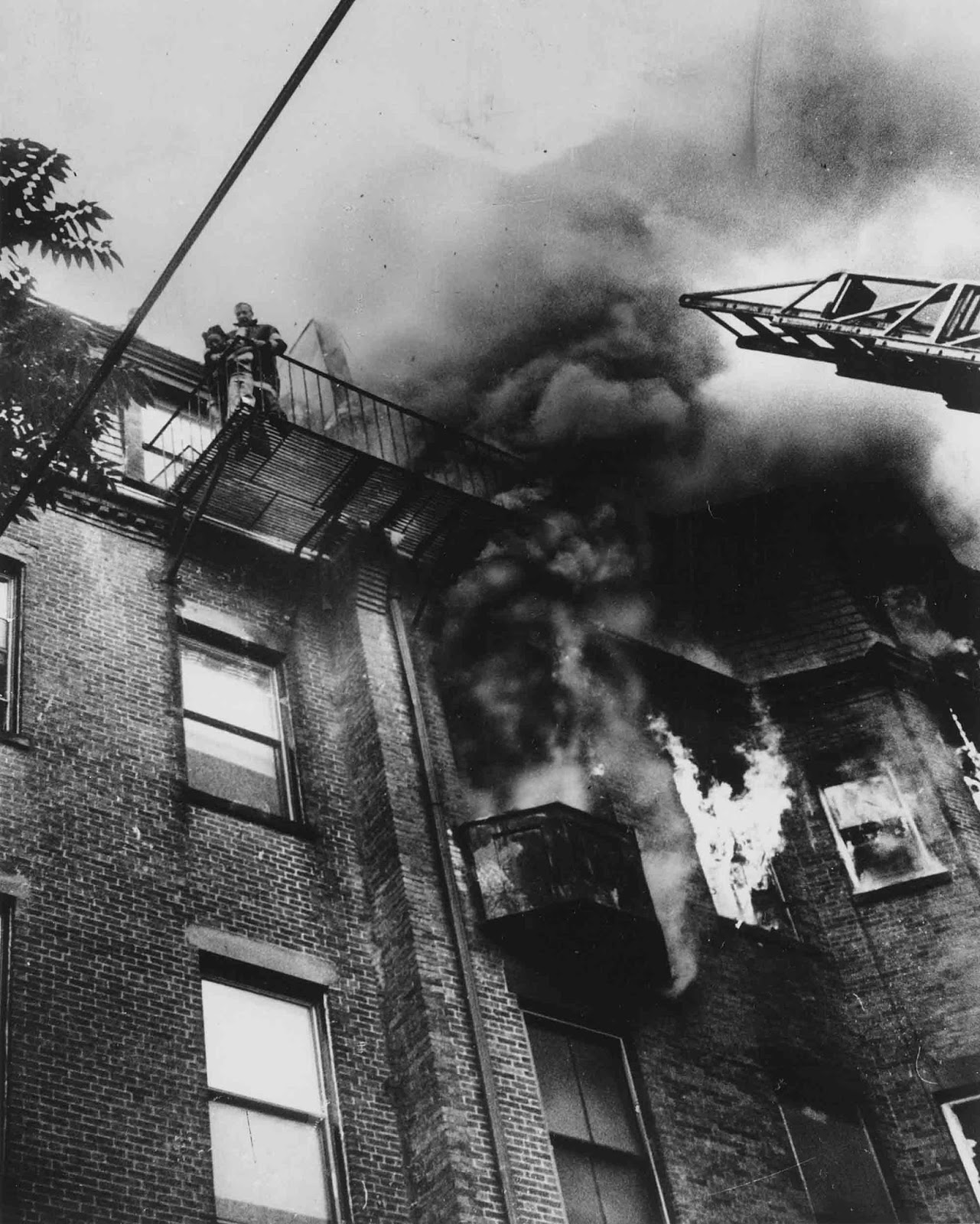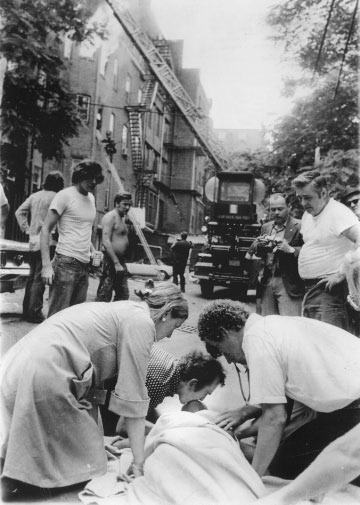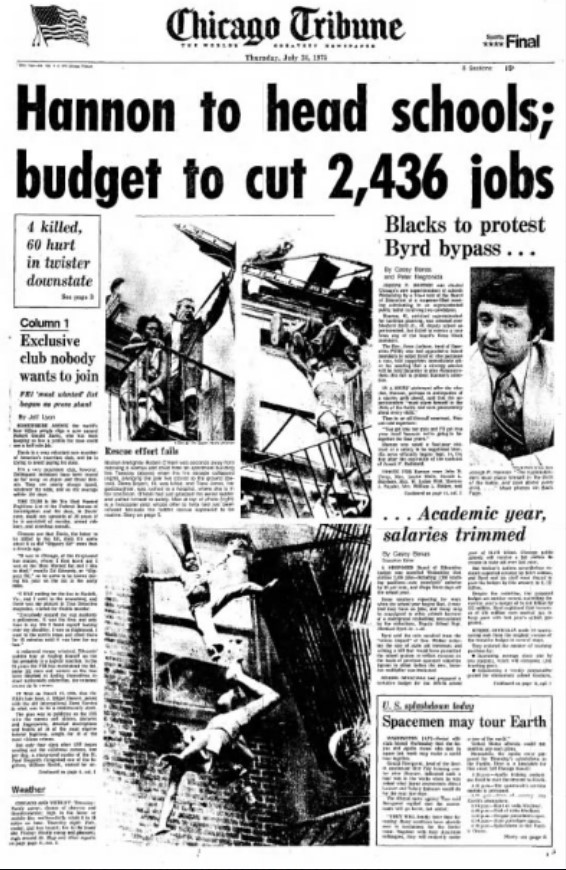Fire Escape Collapse—also known as Fire on Marlborough Street—is a striking black-and-white photograph by Stanley Forman that won the Pulitzer Prize for Spot News Photography in 1976 and was named World Press Photo of the Year. The controversial image dominated the front page of the Boston Herald American and was featured in over a hundred newspapers across the country.
Captured with a motorized camera, the photo shows two girls falling from the apartment building on Marlborough Street in Boston on July 22, 1975 when the fire escape collapsed. The scene includes not just the girls but also potted plants falling in the chaos. Tragically, the 19-year-old girl died upon impact, while her younger companion managed to survive.
Keep scrolling to know the whole sad story and how it impacted laws.
What exactly happened?

On the scene of a tragic fire, Robert O’Neill, the tillerman of the first fire engine to arrive, called on 19-year-old Bryant to lift her two-year-old goddaughter, Jones, to safety on the roof. Unfortunately, Bryant couldn’t manage it, so O’Neill jumped down to help before the ladder reached them.
As he held onto Bryant with one arm while gripping the ladder with the other, the fire escape suddenly collapsed. O’Neill managed to hang on with one hand and was rescued, but Bryant and Jones fell about 50 feet (15 meters).

Bryant suffered severe head and body injuries and passed away just hours later. Miraculously, Jones survived the fall by landing on Bryant’s body, which cushioned her impact. During this chaotic moment, helicopter pilot Joe Green, who had been providing traffic reports, landed nearby and offered to help, but he received no response from the firefighter.
What led to this tragedy?

Police issued an arrest warrant for Fred Durham, the owner of the building, following a series of trash fires that occurred behind the property. These incidents, along with complaints about an unlicensed lodging house, brought Durham under investigation.

The fires, which were reported multiple times in the weeks leading up to the accident, raised concerns about safety and negligence. Authorities were already focused on the property, but the tragic accident further intensified the scrutiny, pushing local officials to act.
The making of image

Stanley Forman shared he was just about to leave the Boston Herald office when he got a call about a fire. He quickly followed a fire engine to the scene and heard shouts for a ladder truck. Running to the back of the burning building, he spotted Diana Bryant and Tiare Jones clinging to a fire escape.
Because of the heat of the fire behind, Bryant and Jones were “basically leaning” at the point farthest from the building. Forman then took a position where he could photograph what he thought was “an impending routine rescue” in his own words.

Due to the intense heat behind them, they were almost hanging out over the edge. Forman positioned himself to photograph what he thought would be a standard rescue. However, as the situation unfolded, he realized the danger and felt a wave of panic.
He recalled, “It dawned on me what was happening and I didn’t want to see them hit the ground. I can still remember turning around and shaking”. Unfortunately, he lost sight of them as they fell behind a fence and out of view.
Its huge impact

Forman created a set of prints for the Associated Press, which distributed the powerful image to 128 newspapers in the U.S. and several foreign countries.
The initial reaction to the photo was negative, as the newspaper faced accusations of sensationalism. However, the national anger sparked by its publication led to significant changes in fire escape laws across the country.
Within just 24 hours, Boston took steps to enhance fire escape safety. Fire safety organizations leveraged the image to advocate for similar improvements in cities across the US.


